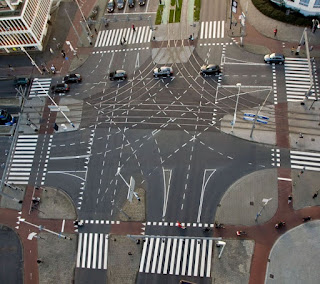Efficient Roadway Management: Improving Infrastructure With Traffic Counting
For road traffic counting in Melbourne is one of the most basic components of planning and designing infrastructure projects. By collecting data on how much traffic is using a road, we can develop an accurate picture of vehicle flow.
As well as determine if there's enough space for everyone who needs to get where they're going. For the roads, the best Traffic counting in Melbourne is also important because it allows engineers to design better roads with fewer crashes and less congestion over time. Saving money in the long run by preventing expensive repairs down the road.
In this blog we are going to discuss the topic of how the traffic counting system is an efficient way to manage traffic are:
What is traffic counting?
Traffic counting is the process of collecting data about traffic. There are two main methods for doing this: manual and automatic.
Manual traffic counting in Melbourne can be done using human observers or cameras, which are then processed by software to generate data. Manual systems are typically less accurate than automatic ones, but they're often more cost-effective and easier to maintain over time.
Because they only require personnel who already work in your organisation as part of their daily duties (e.g., police officers).
Automatic systems use sensors placed along roadsides or embedded into roadbeds that detect vehicles passing through them based on their shape and size.
Then transmit this information back to a central computer system for analysis by trained staff members. Who can interpret it into usable metrics such as volume per hour/day/month/year etc?
How does it work?
A traffic counter is a device that tracks the number of vehicles passing through an intersection. There are various types of sensors and cameras used by these systems:
- Underground sensors –
Sensors embedded in the road surface detect vehicle movement as they pass over them. These can be used for both traffic flow monitoring and speed enforcement purposes. They're also more reliable than other methods because they don't rely on weather conditions or driver compliance with posted speed limits (e.g. if someone drives through a school zone at 50 mph).
- Laser sensors –
Similar to underground sensors, but instead of being buried under pavement, these devices are mounted overhead above intersections. Use lasers to calculate vehicle counts based on their distance from each other (the greater distance between two objects means fewer cars). This method works best in areas where there aren't many trees or buildings blocking line-of-sight between individual cameras.
Why is it important to count traffic?
Counting traffic is an important way to help identify and prioritise projects. It can also help determine if a project is successful, cost-effective, safe and environmentally friendly.
Counting traffic allows you to:
- Identify needs for improvements that may not be obvious from other sources of data (such as crash reports or citizen complaints).
- Determine whether a project has met its goals for safety or environmental improvements.
- Provide information on the effectiveness of roadway management strategies such as congestion pricing or lane usage restrictions based on changing travel patterns over time.
Traffic counting is the most accurate way to collect data
Traffic counting is the most accurate way to collect data. However, accuracy depends on the type of count and the type of vehicle being counted. Manual counts are considered more accurate than automatic or video-based systems.
As they rely on human observers who can verify that a vehicle is present in their field of view at all times. Whereas automatic systems may miss vehicles due to occlusion by other vehicles or objects in front of them.
Conclusion
As you can see, traffic counting in Melbourne is a valuable tool for improving infrastructure. Traffic counting provides the information necessary to make informed decisions about where and when to invest in improvements, such as adding new lanes or widening existing roads.
It also helps cities better manage their resources by letting them know where congestion occurs so they can strategically plan construction projects around those areas.
Source By: Efficient Roadway Management: Improving Infrastructure With Traffic Counting



Comments
Post a Comment